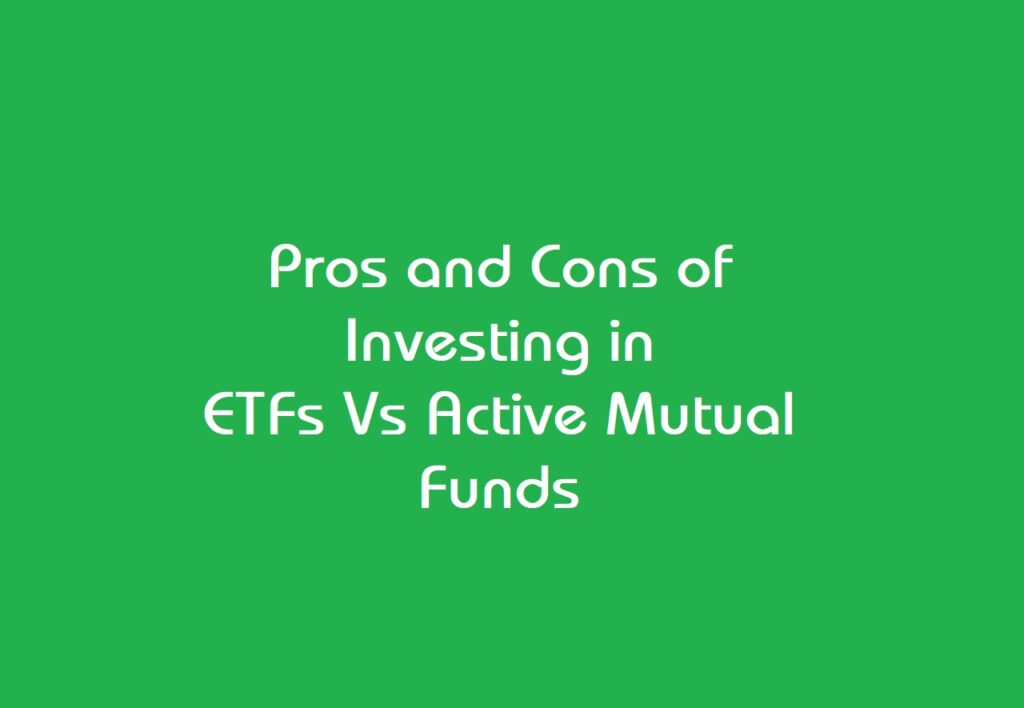Mutual fund industry in India started in 1963 by an act of Parliament and will complete 60 years in 2023. The industry has come a long way in the last 20 – 25 years. The total assets under management of the mutual fund industry as on 31st March 2023 was nearly Rs 40 Trillion, multiplying nearly 2 times in the last 5 years (source: AMFI, 31st March 2023).
As the mutual fund industry evolved over the past couple of decades, exchange traded fund or ETF schemes are also becoming increasingly popular in India following in the global trend. Both regular mutual funds and ETFs can be suitable investment options for investors.
Main difference between mutual funds and ETFs
Regular mutual funds are actively managed. In active mutual fund schemes, the fund manager of the scheme aims to beat the benchmark market index. An ETF, on the other hand, is a passive scheme. A passive scheme invests in a portfolio of securities that replicate the benchmark market index e.g. Sensex, Nifty etc; a passive scheme does not aim to beat the benchmark market index, it simply aims to track the index as closely as possible. Since ETFs do not need active fund management, the Total Expense Ratios (TERs) or cost of an ETF is much lower than active mutual funds.
Benefits of investing in ETFs
- The cost of managing a scheme (TER) is charged against the scheme’s assets to arrive at the Net Asset Values (NAVs). In other words, for the same performance of the underlying portfolios, the NAV growth of a scheme with higher TER will be lower than NAV growth of a scheme with lower TER. Since ETFs have much lower TER (cost) than active mutual funds, ETF will outperform the active mutual fund, unless the active mutual fund is able to outperform the benchmark index by a percentage margin which is higher than the TER.
- In order to beat the market benchmark index, the fund manager of an active fund will have to be overweight or underweight on certain stocks in the index. This will result in unsystematic i.e. stock or sector specific risks. If the overweight stocks in the active equity mutual fund underperform, then the fund will also underperform versus the benchmark. . An ETF will not be overweight or underweight on any stock; the percentage holding of a stock in an ETF will mirror the weight of the stock in the market benchmark index. There is no unsystematic risk in ETF’; they are subject only to systematic risk or market risk.
Benefits of investing in active mutual funds
- An actively managed fund has the potential of giving higher than benchmark returns through active stock selection i.e. create alphas for investors. If your active fund can consistently create alphas over long investment tenures, your wealth creation will be more.
- You need Demat and trading accounts to invest in ETFs which you do not need to invest in mutual funds.
- After the NFO period, you can buy / sell ETF units only on the stock exchanges through trading account. On the other hand, you can redeem units of regular mutual fund schemes at any time with the AMC.
- Mutual fund transactions (buy / sell), which take place based on applicable mutual fund NAV. ETF buy / sell transactions take place like stocks / shares.
You can invest in mutual fund through systematic investment plan. However, AMCs do not offer SIP facility for exchange traded funds.








Leave a Comment
You must be logged in to post a comment.